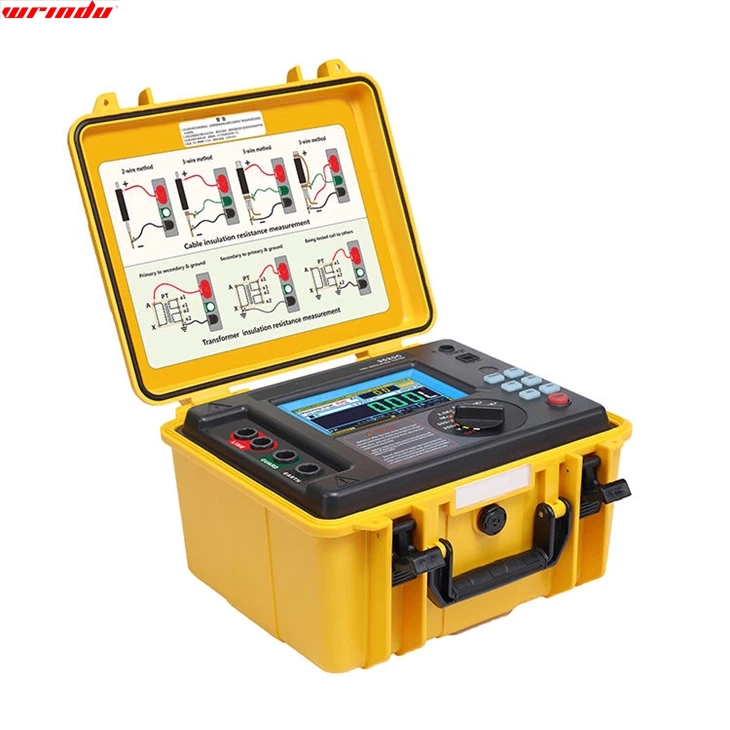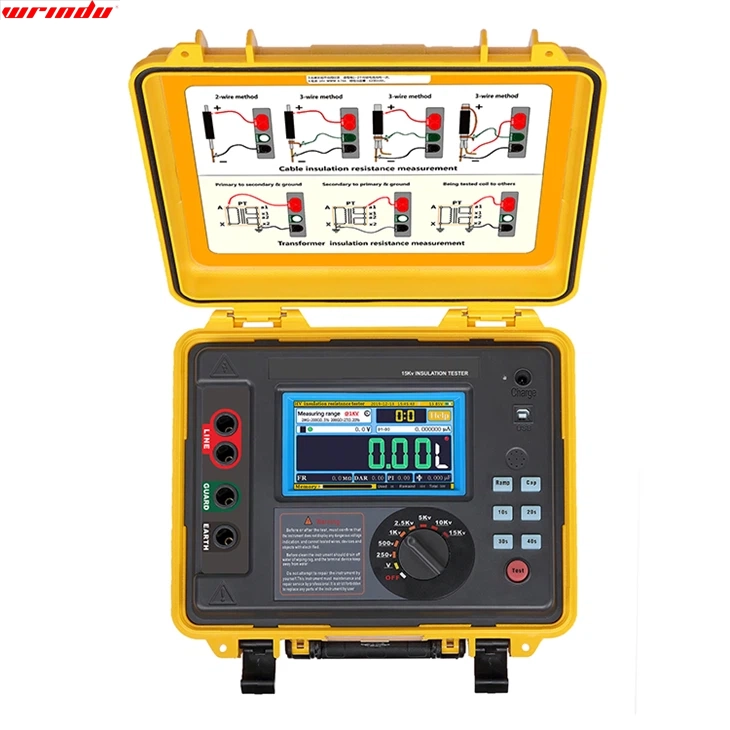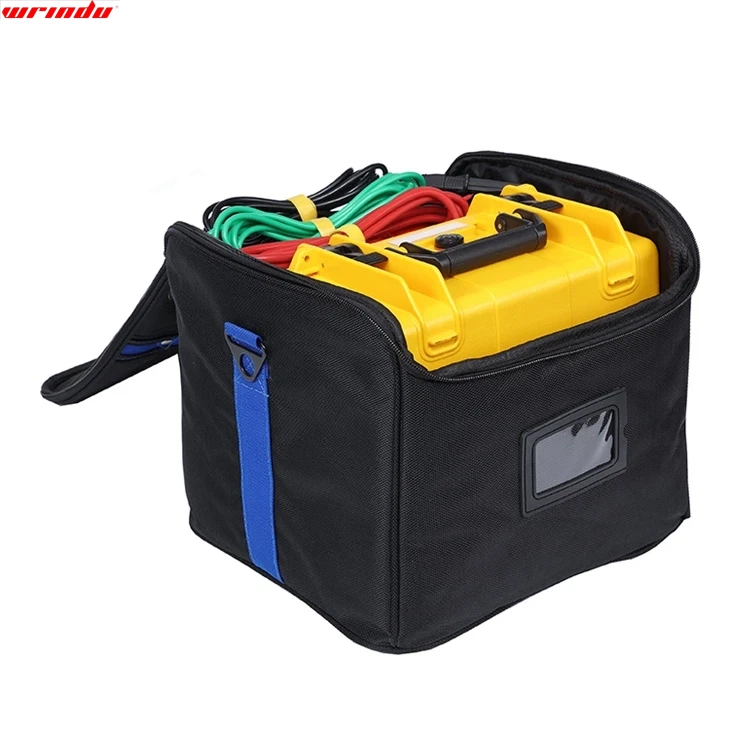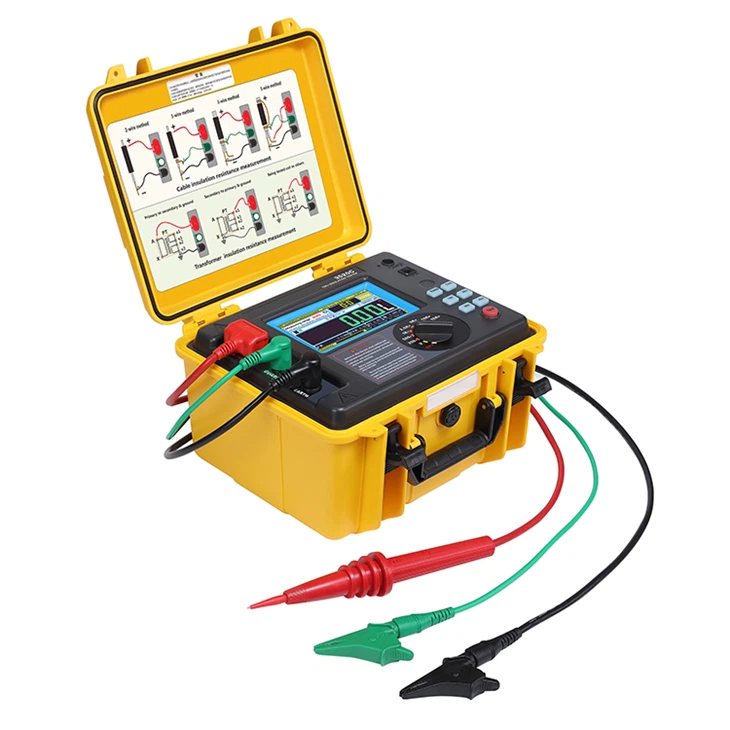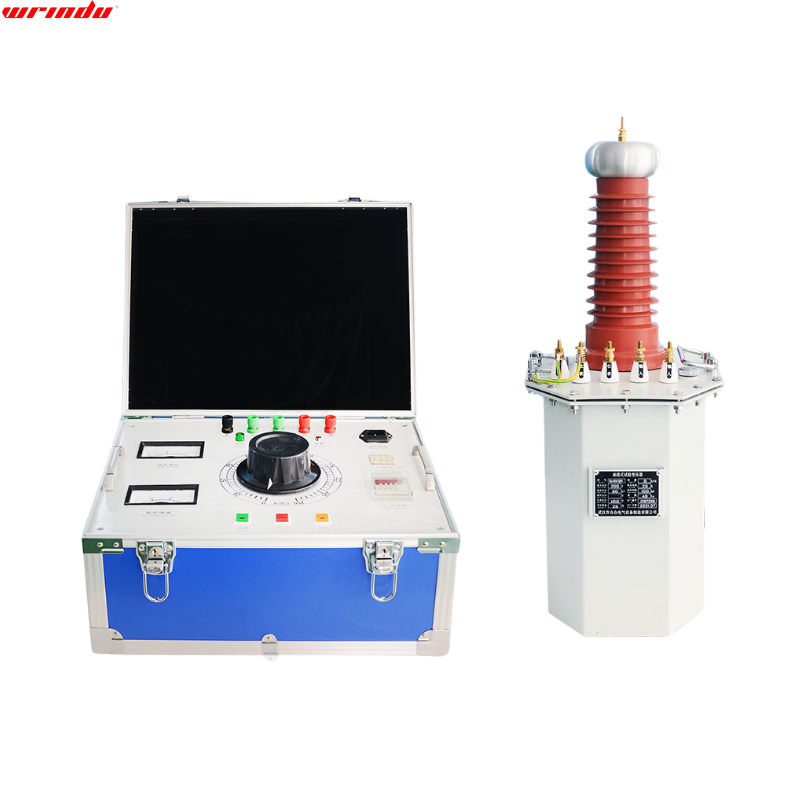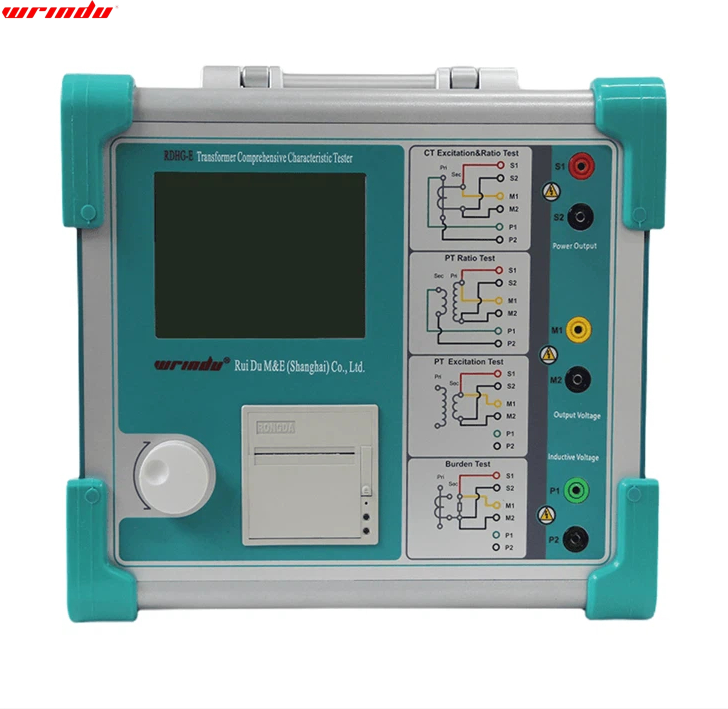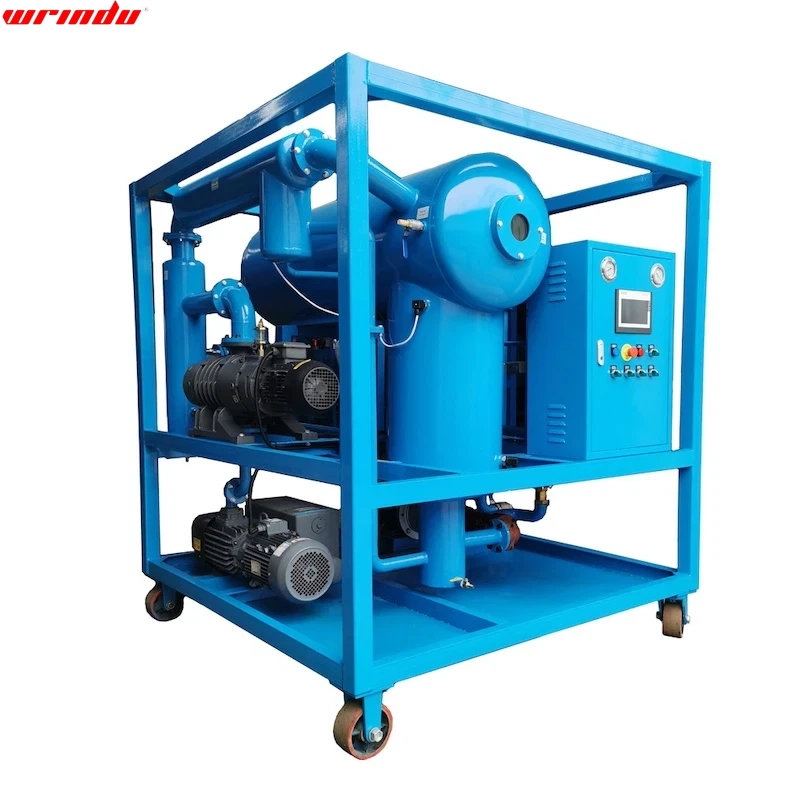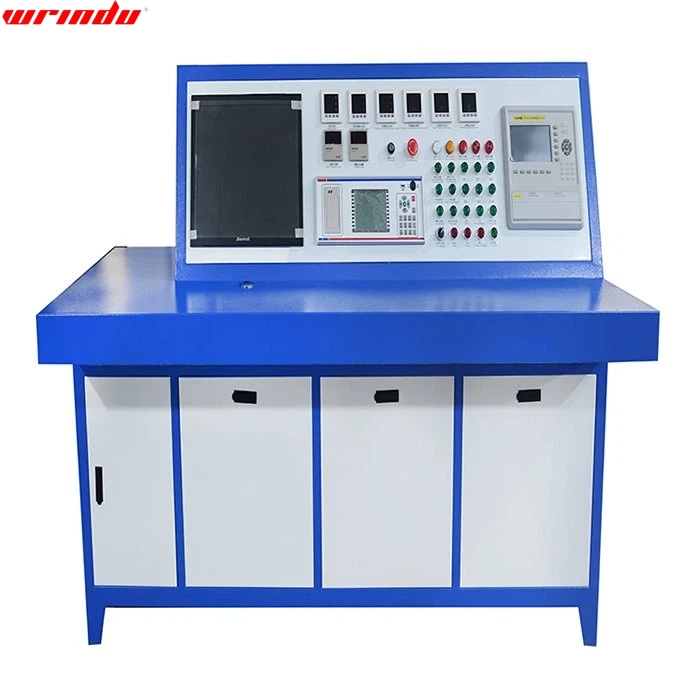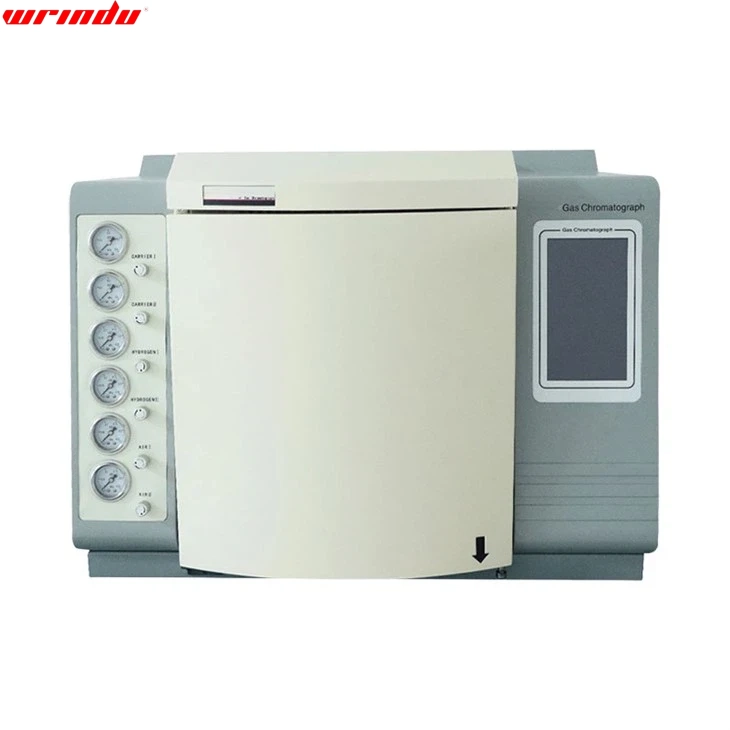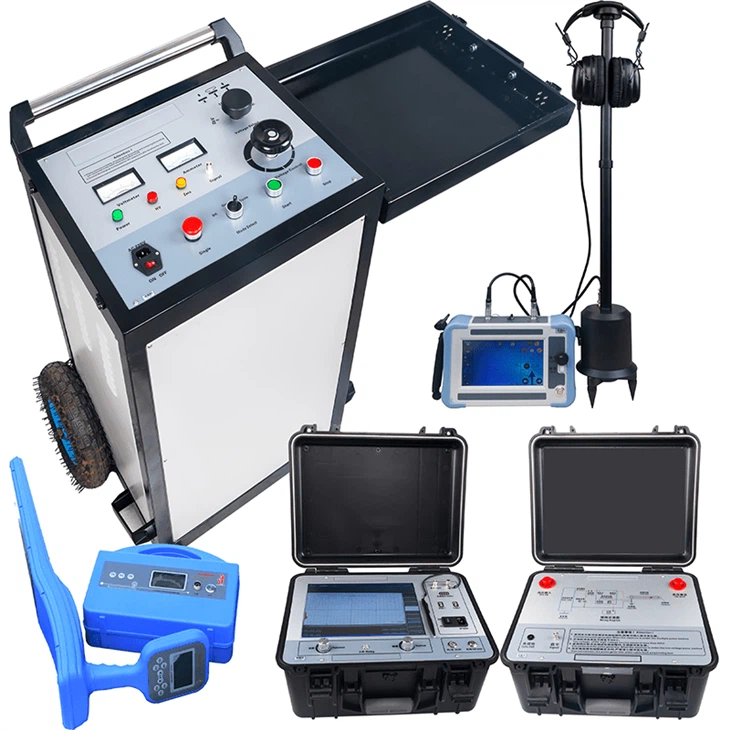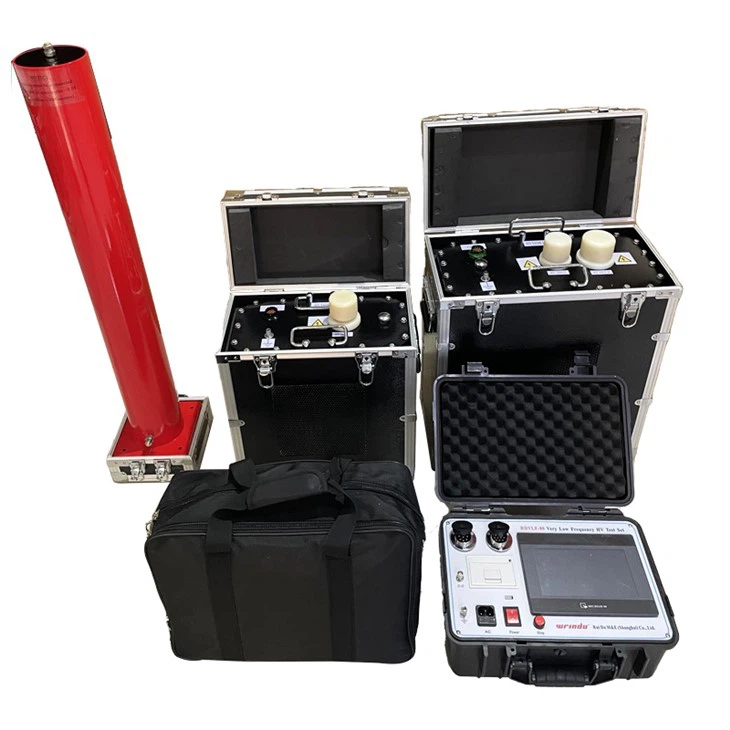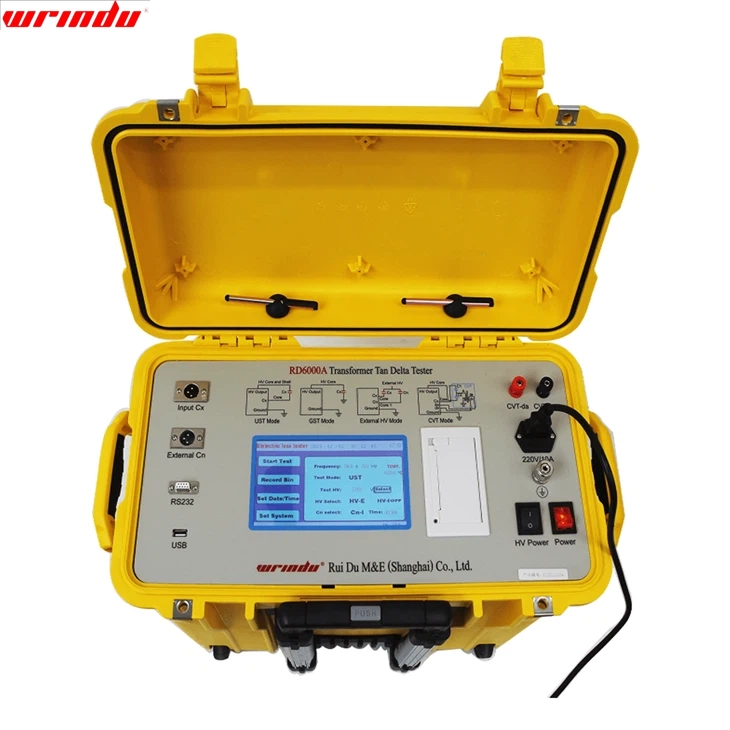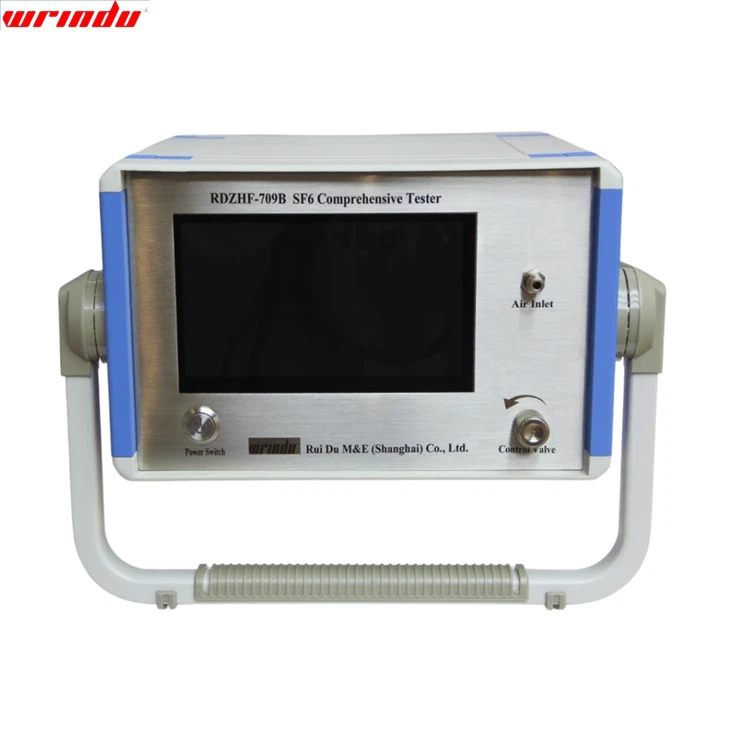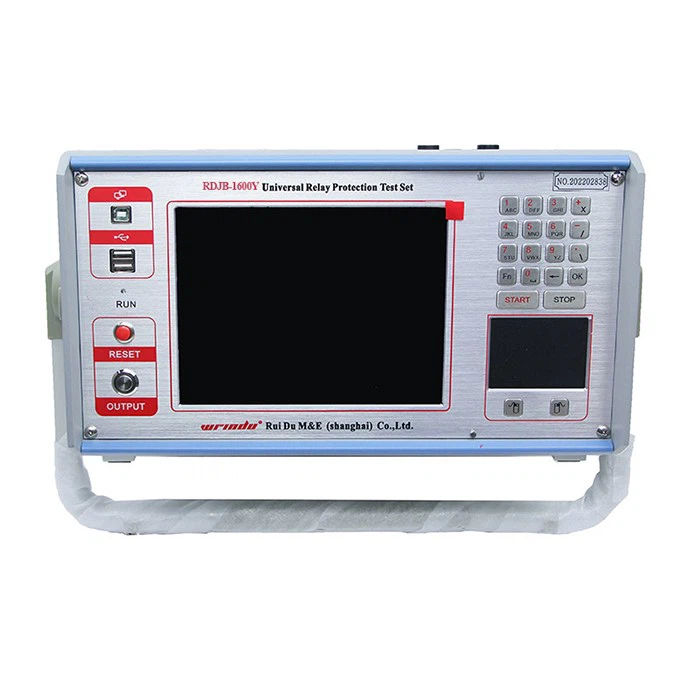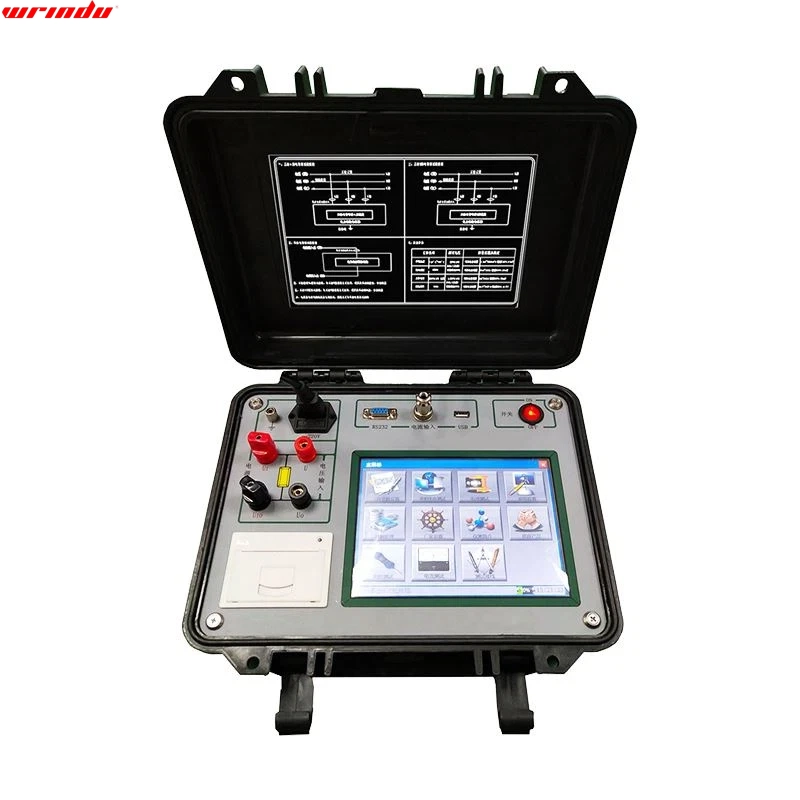OVERVIEW
Wrindu high-voltage is the best insulation resistance tester, and it is fully functional and designed to test various insulation resistance parameters. It has excellent anti-interference capabilities and is especially suitable for insulation resistance testing of large-capacity high-voltage electrical equipment and transmission lines in strong inductive electrical environments such as substations. It is equipped with a true-color touch screen that can intuitively present all test data and battery power on the same interface, making the operation simple and clear. The design combines a knob switch with a button, making the operation more convenient and efficient. The outer shell is a solid double-layer structure, and the protection level reaches IP65 when the outer box is closed. It can effectively block the intrusion of moisture and dust, resist impact during transportation and storage, and fully guarantee the safety and stability of the instrument. The instrument is widely used in power, telecommunications, meteorology, computer rooms, oil fields, electromechanical installation and maintenance, and power supply departments of industrial and mining enterprises. It is a commonly used and necessary professional instrument.
CHARACTERISTIC
- 1. Uses large-capacity rechargeable lithium battery.
- 2. Equipped with a touch color screen, the test data can be displayed on the same screen, and the test operation and historical record query are extremely convenient.
- 3. Its powerful anti-interference technology can maintain stable test performance even in environments with large, distributed capacitance (such as long cables) or strong electromagnetic interference (such as substations).
- 4. It provides a custom measurement mode. Users can choose PI DAR calculation formulas and set test voltage and test time to meet the needs of different scenarios.
- 5. Built-in voltage monitor, which can automatically monitor the live voltage of the object under test. When the voltage exceeds 36V, the test is automatically prohibited, effectively protecting the safety of the instrument and operator.
- 6. Built-in current monitor, which can automatically display the current value of the test circuit.
- 7. A built-in temperature monitor can automatically display the temperature and humidity inside the instrument box.
- 8. The best insulation resistance tester has an automatic discharge function. It can automatically and quickly release the charge of the object under test after the test is completed without the need for an additional discharge circuit.
- 9. Equipped with a large-capacity test record memory, it can automatically store real-time test data, including test date and time, up to 1000 groups.
- 10. Support USB communication upload function, which can upload recorded data to the computer for data statistics and analysis.
- 11. With Bluetooth communication function, the test results can be uploaded directly to the mobile phone.
For more information about insulation resistance equipment, please click More.
To request the latest quotes, please click Contact Us.
FAQ
Q: Can a multimeter be used for insulation resistance tests?
A: No, a multimeter is not suitable for insulation resistance testing. Insulation resistance testing requires higher voltages, and specialized instruments like Insulation Resistance Testers (Megohmmeters) are designed for this purpose. Using a multimeter can provide inaccurate results and is not safe for insulation resistance testing.
Q: Is insulation resistance measured in ohms?
A: Yes
Insulation resistance is the resistance to current leakage through the surface of the insulating material surrounding a conductor. It is measured in ohms (Ω) and is of great significance to electricians in the electrical industry. Insulation resistance values indicate the effectiveness of the insulation in preventing unintended current flow.
Q: What is the difference between resistance and insulation resistance?
A: Resistance is the opposition to current flow in conductors, measured in ohms. Insulation resistance, also measured in ohms, is the resistance to current leakage through insulating materials surrounding a conductor. While resistance applies to general conductors, insulation resistance specifically focuses on the quality of insulation in preventing unintended current flow and ensuring electrical safety.
Q: Is an insulation test the same as a resistance test?
A: No
An insulation test focuses on measuring the resistance of insulating materials to prevent current leakage and ensure electrical safety. On the other hand, a resistance test is a general measurement of resistance in conductors or circuits, assessing overall electrical resistance for efficient current flow.
Q: Should the insulation resistance test be 250V or 500V?
A: The selection between a 250V and 500V insulation resistance test depends on the equipment’s specifications. A 250V test is suitable for lower-voltage and sensitive systems, offering a gentler assessment of insulation. Meanwhile, a 500V test is common for medium-voltage equipment, providing a more rigorous evaluation.
APPLICATION









